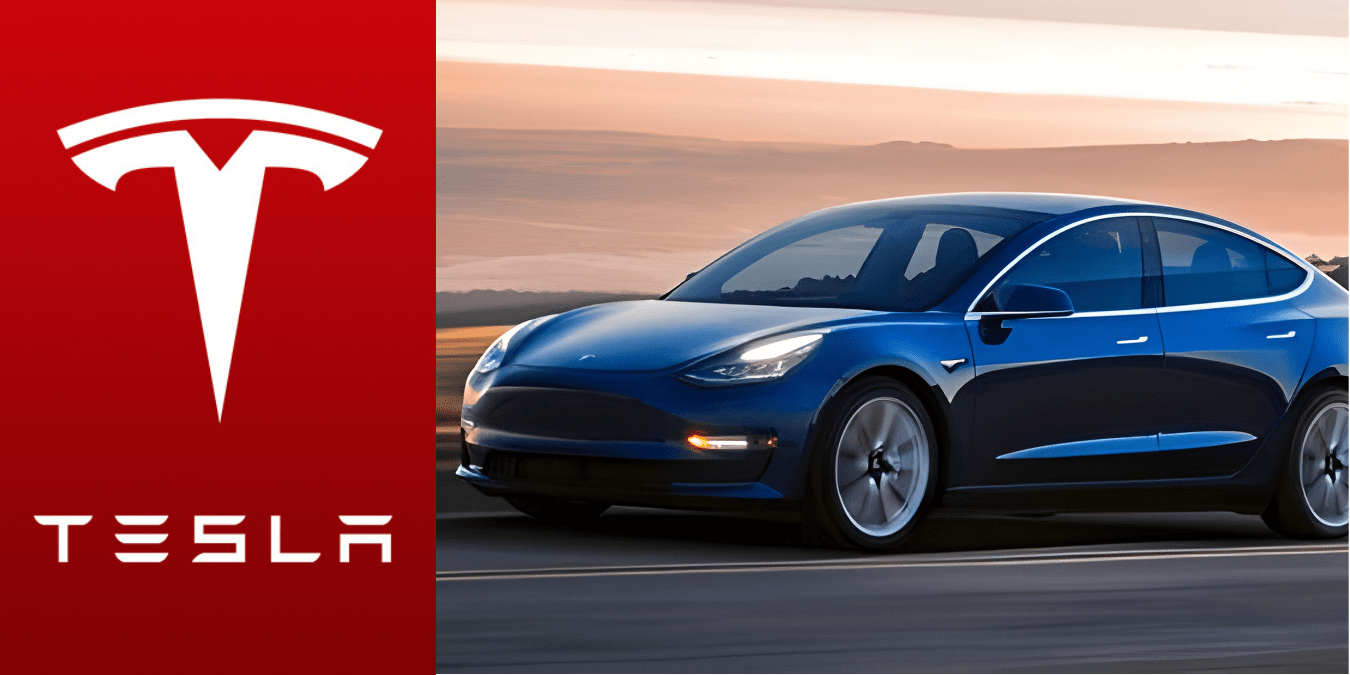
Tesla Sells Only 40 Cars in October 2025: Analysing Reasons Behind Tesla’s Low Car Sales in India
Tesla’s India sales show a shocking dip with just 40 cars sold in October 2025 amid festivity-driven record-breaking electric vehicle sales by local giants. Discover hidden reasons behind Tesla’s slow start, fierce competition from Tata and Mahindra, and why India’s EV revolution favors affordable, locally made models for now.
A Surprising Shift in India’s EV Landscape
In a month when the Indian auto market witnessed a festive season boom and record-breaking car sales, Tesla—the global electric vehicle (EV) giant—registered a modest 40 vehicle sales in India in October 2025. This shocking number contrasts sharply with titans like Maruti Suzuki, Mahindra, and Tata Motors, which are breaking all sales records. What’s behind Tesla’s slow start in one of the world’s fastest-growing automobile markets? Is this a sign of deeper challenges for luxury EV makers in India’s evolving financial and policy landscape?
Tesla’s India Sales Performance: A Quick Reality Check
- Tesla sold just 40 units in October 2025, down sharply from 61 in September
- Compared to Tata Motors’ EV sales of over 9,000 units and over 4.7 lakh total vehicle sales in India
- Tesla’s key sales concentrated in metros like Mumbai (41), Delhi (11), Pune, and Bangalore
Analysing Reasons Behind Tesla’s Low Car Sales in India for October 2025
Tesla’s low car sales in India for October 2025 stem from a combination of interrelated challenges that reflect market realities, pricing structures, consumer behaviour, and regulatory factors unique to India’s evolving electric vehicle (EV) ecosystem. Key reasons behind the modest figure of just 40 cars sold in October include:
1. High Import Duties and Premium Pricing
- Tesla’s vehicles come as completely built units (CBUs) imported into India, attracting hefty import duties of 70% plus additional taxes, effectively doubling the cost.
- These tariffs place the Tesla Model Y’s price north of ₹45-60 lakh, making it about three times more expensive than popular domestic EVs like Tata Nexon EV priced around ₹15 lakh.
- High prices reduce affordability for the broader Indian consumer base, where price sensitivity is strong despite rising aspirations for EVs.
2. Limited Local Manufacturing and Incentives
- Tesla’s slow progress in setting up a manufacturing plant in India (planned gigafactory with ₹15,000 crore investment but not operational yet) means they miss out on lower import tariffs (15%) applicable only to locally produced EVs.
- Government incentives under India’s New EV Policy 2025 heavily favour vehicles manufactured domestically, pressuring foreign brands to invest locally for competitiveness.
3. Insufficient Charging Infrastructure
- Tesla’s reliance on its proprietary Supercharger network is constrained by India’s limited public EV charging infrastructure—roughly 12,000 chargers for over 1.5 million EVs as of 2025.
- This infrastructure gap fuels range anxiety among Indian buyers, especially in non-metro areas, limiting Tesla’s appeal beyond affluent city locals.
4. Market and Consumer Preferences
- India’s EV demand is heavily skewed towards affordable, practical electric two-wheelers and compact SUVs from domestic brands like Tata and Mahindra.
- Tesla’s premium luxury positioning does not fit the mainstream Indian purchasing power or buying patterns focused on lower total cost of ownership and after-sales service network.
- Competitors offering multiple EV models, locally assembled with varied price points and service availability, are winning larger market share.
5. Slow Consumer Demand and Order Pipeline
- Since Tesla’s launch in mid-2025, about 600 total orders have been reported, falling short of the company’s internal targets of shipping up to 2,500 units this year.
- Actual deliveries have been limited to key metros like Mumbai, Delhi, Pune, and Gurgaon, further narrowing reach.
- Overall subdued demand reflects local hesitancy triggered by high costs and limited experience with Tesla’s brand ecosystem in India.
6. Evolving RBI and Government Policies
- While RBI’s 2025 interest rate cuts and liquidity injections have made EV loans cheaper, current financing trends favour volume-driven, lower-cost EV segments rather than luxury imports like Tesla.
- Government mandates pushing for “Make in India” and local sourcing percentages discourage purely import-driven business models, affecting Tesla’s pricing and sales.
Assessing Competition from Local EV Manufacturers Versus Tesla
Here is a clear comparison table assessing the competition between Tesla and leading local EV manufacturers Tata Motors and Mahindra in India for 2025:
| Aspect | Tesla | Tata Motors | Mahindra |
| Market Share (India 2025) | Minimal, under 1% with 40 cars sold in Oct 2025 | Largest Indian EV player, 35% market share | Significant player with 15% market share |
| Entry Price Range | ₹45-60 lakh (Tesla Model Y) | ₹14-31 lakh (Nexon EV, Harrier EV) | ₹15-35 lakh (BE 6, XEV 9e, upcoming XEV 9S) |
| Product Range | Mainly premium SUV Model Y | Wide range: compact EVs to SUVs | Multiple EV SUVs including 7-seater models |
| Local Manufacturing | Not yet operational, plans underway | Fully local manufacturing with incentives | Established local production facilities |
| Government Incentives | Limited benefits due to import status | Eligible for full subsidies under EV policy | Eligible for full subsidies, local incentives |
| Charging Infrastructure | Growing but limited Supercharger network | Supported by public chargers and Tata network | Expanding network, service support in metros |
| Driving Range | 500-620 km per Model Y variants | 312-538 km per model depending on variant | 300-656 km depending on model |
| Brand Positioning | Luxury/tech-focused, aspirational | Value and mass market, trusted brand | Practical, family and fleet focus |
| After-sales Service | Limited, mostly metro-based service centers | Extensive nationwide service network | Growing service network with focus on after-sales |
| Target Customer | Affluent urban buyers | Broad middle-income, urban and semi-urban | Middle-income families and commercial fleets |
| Competitive Advantage | Advanced tech, autopilot, established global brand | Cost-effective, local pricing, extensive after-sales | Diverse product lineup, family-friendly options |
| Main Challenges | High import duties, pricing, limited models | Pricing pressures, tech gap vs Tesla | Building brand perception beyond commercial vehicles |
RBI 2025 Policies and Their Influence on Auto and EV Financing
- RBI’s interest rate cuts and liquidity infusion freeing ₹2.5 lakh crore for bank lending
- Cheaper auto loans boosting volumes for domestic manufacturers but yet to trigger Tesla sales spike
- Expected rise in EV financing through NBFCs and banks could widen access to affordable EV segments in 2025-26
The Festive Season Sales Surge: Tesla Misses the Wave
- October 2025 saw record car sales in India, driven by GST 2.0 benefits and festival demand
- Maruti Suzuki, Mahindra, Tata Motors posted historic highs, while Tesla’s sales dipped
- Price cuts in mass-market vehicles and attractive financing deals contrast Tesla’s luxury positioning
Tesla’s Strategy Moving Forward: What Can Investors and Consumers Expect?
- Tesla has committed to a ₹15,000 crore ($2 billion) investment for a factory in Maharashtra, hinting at faster local production
- Expansion plans for charging infrastructure with stations in Mumbai, Delhi planned but still sparse
- Tesla aims for 10,000 unit sales annually by 2027, a steep climb from the current base
What Indian Consumers Should Know: Practical Takeaways
- Tesla ownership cost remains high due to pricing and limited service network
- Potential buyers should weigh value vs. cost of premium EVs amid rising affordable electric SUV options
- RBI policy benefits and lower interest rates make domestic EVs more accessible and appealing currently
Summary: Quick, Smart Takeaways for Indian Readers
- Tesla’s 40 car sales in October contrast sharply with record-breaking industry growth in India
- High import duties, premium pricing, and limited local production hinder Tesla’s market penetration
- RBI’s rate cuts and financial policies currently favour affordable EV financing, not luxury EV ownership
- Tesla’s long-term India strategy includes major local investment, but real impact will take years
- Indian EV market growth dominated by volume-driven brands with better financing options
Final Thought: The Hidden Future Move in India’s Financial and EV Ecosystem
While Tesla’s Indian journey starts modestly, a major financial and policy revolution is quietly shaping the EV ecosystem. Upcoming RBI-backed initiatives on unified lending interfaces, lower interest rates, and aggressive state subsidies may soon create a hidden gateway for premium EV financing breakthroughs. Could Tesla’s slow sales be a prelude to a fast, disruptive leap once these financial reforms deepen? The next big wave in India’s electric vehicle revolution might just be around the corner—waiting for savvy investors and consumers to unlock its secret.
Disclaimer: The use of any third-party business logos in this content is for informational purposes only and does not imply endorsement or affiliation. All logos are the property of their respective owners, and their use complies with fair use guidelines. For official information, refer to the respective company’s website.
































